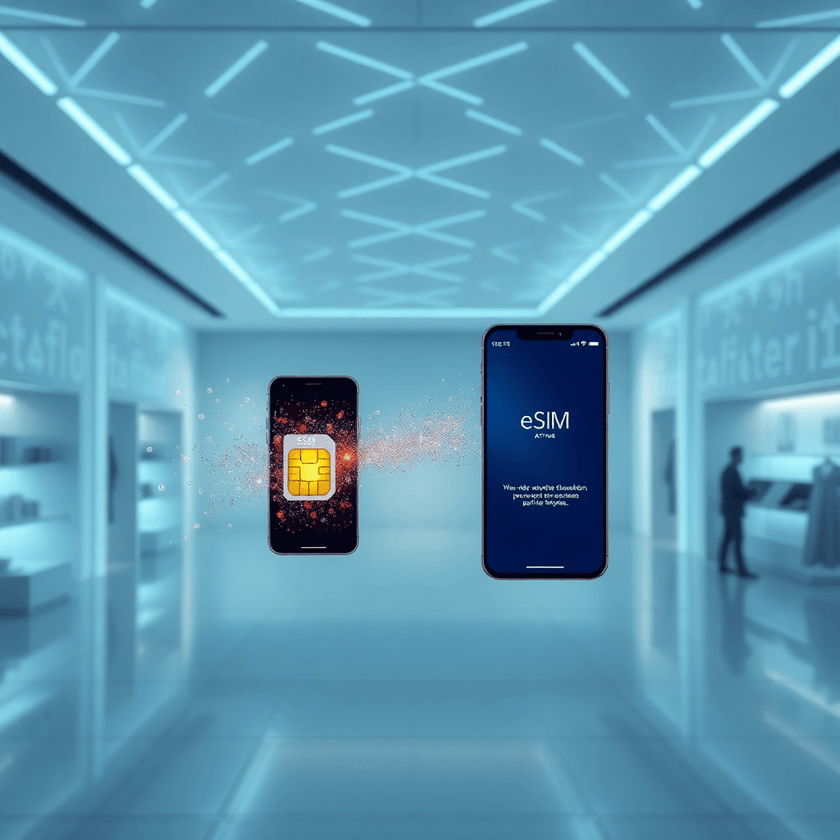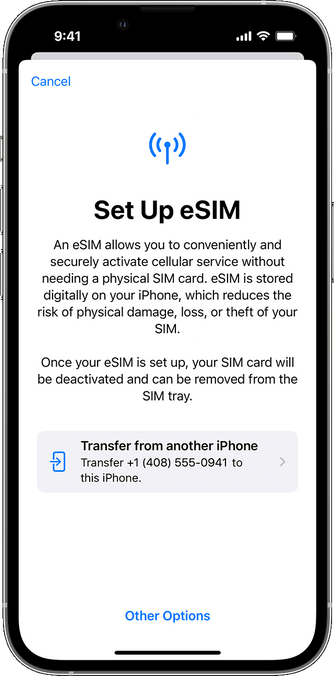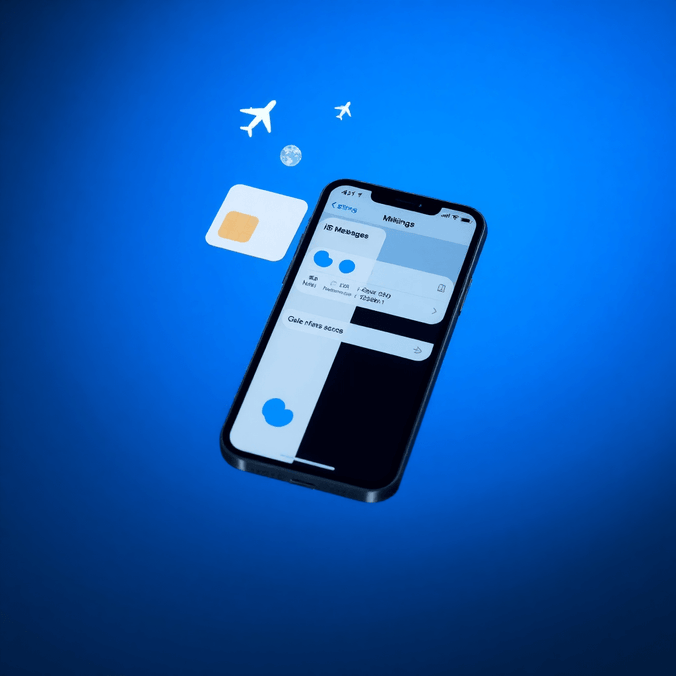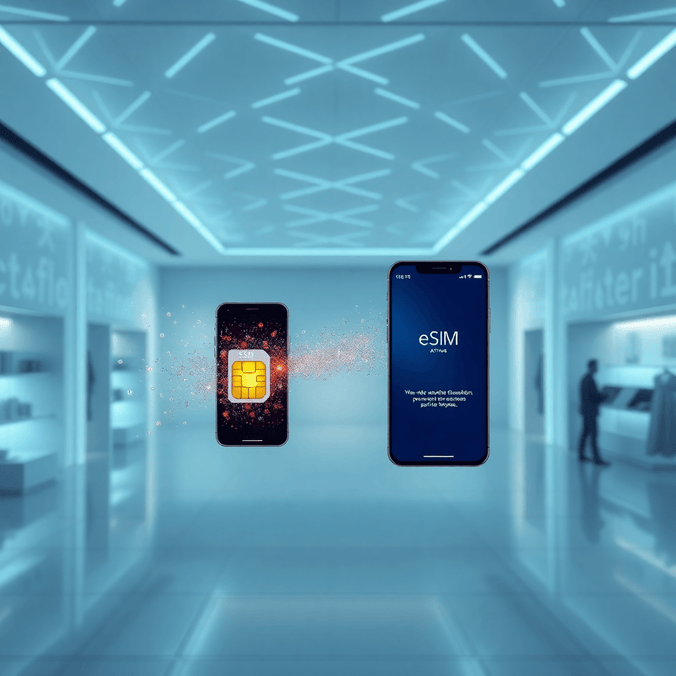Can I Keep My Phone Number with an eSIM? The Complete Guide to Number Portability in 2024

Phone Numbers and eSIMs: Understanding the Basics
In the evolving landscape of mobile technology, one question consistently emerges: “What happens to my phone number if I switch to an eSIM?” This comprehensive guide will help you understand the relationship between your phone number and eSIM technology, setting the foundation for a smooth transition to digital SIM cards.
Understanding the Relationship: Phone Numbers and eSIMs
Your phone number is independent of your SIM type – whether it’s a physical SIM card or an eSIM. Think of your phone number like your email address: it’s an identifier that stays with you regardless of which device or service you use to access it. The eSIM is simply the modern technology that connects your device to the cellular network.
Key Concepts About Phone Numbers and eSIMs
1. Number Independence
- Your phone number is a service feature, not a hardware feature
- Numbers can be transferred between physical SIMs and eSIMs
- You can keep your number while changing devices or carriers
- Multiple numbers can exist on one eSIM-capable device
2. Service Continuity
- No service interruption required when properly switching to eSIM
- Maintain calling and texting capabilities throughout transition
- Keep your contact information consistent
- Preserve your digital identity across platforms
3. Number Portability Rights
- Protected by federal regulations
- Guaranteed right to keep your number when switching carriers
- Applies equally to traditional and eSIM services
- Valid across all types of phone numbers (mobile, landline converted to mobile)
Common Questions About Phone Numbers and eSIMs
“Will I Lose My Number?”
No! Your phone number is yours to keep. The transition to eSIM doesn’t affect your right to maintain your existing number. In fact, eSIM technology often makes the process more streamlined.
“Can I Have Multiple Numbers?”
Yes! eSIM technology actually makes managing multiple phone numbers easier:
- Personal and business lines on one device
- Temporary additional numbers when needed
- International numbers alongside your main number
- Different numbers for different purposes
“What About My Contacts and Messages?”
Your contacts and messages are stored on your phone, not your SIM card. Switching to eSIM won’t affect:
- Contact lists
- Message history
- Call logs
- App data
The Advantages of eSIM for Phone Number Management
1. Enhanced Flexibility
- Switch between numbers instantly
- Add temporary numbers when needed
- Manage multiple profiles easily
- Test new services without disrupting existing service
2. Improved Security
- Better protection against SIM swapping
- Enhanced number theft prevention
- Secure digital activation process
- Remote deactivation capabilities
3. Simplified Management
- No physical swapping required
- Digital activation and deactivation
- Easy backup and restoration
- Streamlined carrier switching
Preparing for an eSIM Transition
1. Initial Assessment
Before beginning the switch to eSIM, verify:
- Device compatibility
- Current carrier’s eSIM support
- Number portability eligibility
- Service requirements
2. Backup Essentials
While your number will transfer seamlessly, always backup:
- Contact information
- Important messages
- App data
- Authentication methods
3. Gather Required Information
You’ll typically need:
- Account number
- Account PIN/password
- Billing information
- Government ID
Understanding Different Types of Number Transitions
1. Physical SIM to eSIM
- Most common transition type
- Usually completed within hours
- Often can be done remotely
- Maintains all existing services
2. eSIM to eSIM
- Fastest transition type
- Digital transfer process
- Immediate activation
- No physical components needed
3. Multiple Number Setup
- Configure primary and secondary numbers
- Set up conditional forwarding
- Manage distinct voicemail boxes
- Establish number hierarchy
Best Practices for Number Management with eSIM
1. Before the Switch
- Verify all account information
- Clear any outstanding balances
- Document current settings
- Understand new features
2. During Transition
- Keep original service active
- Follow carrier instructions precisely
- Test new service before deactivating old
- Verify all features are working
3. After Activation
- Update contact methods where needed
- Configure new features
- Set up voicemail
- Test emergency services
The Role of Data-Only eSIMs
While some eSIM providers, like Andalu, focus on data-only services, these can work perfectly alongside your existing phone number:
- Keep your current number active
- Add data-only eSIM for:
- Backup internet
- Travel connectivity
- Enhanced coverage
- Cost optimization
Looking Ahead: The Future of Phone Numbers and eSIMs
The relationship between phone numbers and eSIMs continues to evolve:
- Integration with digital identities
- Enhanced number portability
- Improved multi-number support
- Advanced call routing features
Planning Your Transition
Consider these factors when planning your switch:
- Current contract obligations
- Device upgrade timing
- Service requirements
- International needs
Looking for reliable data connectivity to complement your phone service? Visit andalu.com to explore our range of data-only eSIM plans, perfect for travel and backup connectivity across 140+ countries.



